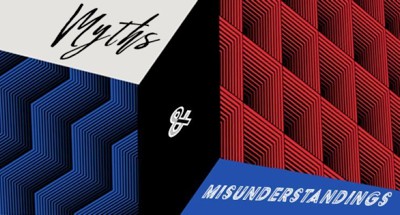In 1891 the pastor of Thomas Jonathan Jackson’s Lexington Presbyterian Church, William S. White, declared that the Virginia Military Institute professor had been “the black man’s friend.” White said so because of Jackson’s supervision of a “Colored Sunday School” between 1855 and the outbreak of the Civil War.
Jackson did indeed conduct a Sunday School for enslaved black people, and likely violated state law in encouraging literacy among his students. Testimony by his former enslaved students after the Civil War suggests some affection existed between teacher and pupils. The fact of the Sunday school, then, is no myth.
It does, though, serve as a foundation for great misunderstanding.
Confederate heritage activists today deploy these facts in order to distance the Confederate cause from slavery. As one speaker suggested at the July 2017 Monument Avenue Commission meeting, Jackson’s Sunday school contradicts the notion that the Confederacy fought for slavery and white supremacy. If a future Confederate general had been so concerned about the Christian welfare of enslaved people, to the point of teaching them to read, how could his Confederate cause be seen as committed to the brutal enslavement of black people? Others use Jackson’s Sunday school class to claim that slaveholders were great humanitarians and it is not uncommon to encounter the idea that Jackson, and other allegedly “benevolent” slaveholders were actually civil rights pioneers.
These claims are rooted in common misunderstandings about Christianity and American racial slavery.
Jackson’s Sunday school fit seamlessly into a proslavery theology that worked not to undermine slavery (as the Sunday School myth claims), but to bolster the institution and make it work according to God’s plans. Proslavery Christianity rested on assumptions of the inherent incapacity of black people to manage their own spiritual lives, and the necessity of superior whites to instruct them in proper religion.
In 1830, a Presbyterian planter and minister in the South Carolina lowcountry, Charles Colcock Jones, initiated a program of evangelization of enslaved people. He did so from a sense of paternalistic obligation to the souls of the men and women whose bodies he enslaved. Jones, along with Methodist William Capers, coordinated with masters to schedule preaching, Sunday Schools, and catechetical instruction to plantation slaves, and he published his program, “The Religious Instruction of the Negroes,” in 1842 to be used by evangelicals across the slaveholding states.
Virginia Christians began to press for greater white control of black religious life after Baptist lay preacher Nat Turner’s 1831 rebellion revealed the insurrectionary potential of independent black religious leaders and after Northern abolitionists began a frontal assault on the morality of slavery. Methodist and Baptist clergy, and laypeople, took a greater interest in introducing black churchmen and women to what they considered sound theology and practice. Indeed, William White at Lexington Presbyterian Church had expressed frustration that “they [Black people] had become so enamored with a boisterous sort of meeting that they could not relish our calm and quiet method of proceeding.”
Proslavery Christians found abundant evidence in the Bible to support slavery. To them, God had ordained slavery as the proper relationship between white and black people. Proslavery Christians interpreted that relationship as one of mutual obligation—of command and obedience; care and subservience. White people and masters, then, understood that they had a duty, as faithful Christians, to supervise the Christian instruction of enslaved people. They did intend to save souls, but whites’ heavenly aspirations could only be fulfilled by black acquiescence in an unequal earthly order. Proslavery Christianity worked to preserve that order, not subvert it.
By the 1850s, the Mission to the Slaves, or “Religious Instruction of the Colored People,” was in full swing throughout the slaveholding states. Virginia Episcopalians took up the cause in the early 1850s with the publication of Plain Sermons for Servants. In Richmond, St. James Episcopal Church hosted a Sunday School attended by over 100 black people in the 1850s.
Religious people in Lexington had entertained the call to minister to enslaved people since the 1830s, but made few attempts to sustain an effort. The Presbytery of Lexington (the regional administrative body) issued a resolution in August 1857, noting,
“The Gospel distinctly recognizes, and sanctions the relation subsisting between master and servant, and as distinctly points out the duties which each owes to the other and among the duties which the master owes to his servant, that of satisfying him with adequate religious instruction is superior in importance.”
The Presbytery issued a list of recommendations, including that each church “be earnestly requested to establish a Sabbath School for their oral instruction in the Shorter Catechism and Sacred Scriptures.” They applauded the work of Bethel and New Providence Presbyterian Churches in this regard, but if Jackson’s school in Lexington was underway at this point, they didn’t notice. They reissued the call in 1860.
Jackson’s story is a window into the complexities arising from interpersonal relationships within slavery and the tension that produced ambivalence within some white southerners. Yet, regardless of the affection he may have shown toward enslaved people, and as politically ambivalent as he may have been about slavery, Jackson fully participated in a larger initiative intended not to end or undermine slavery, but to make slavery and racial inequality work.
